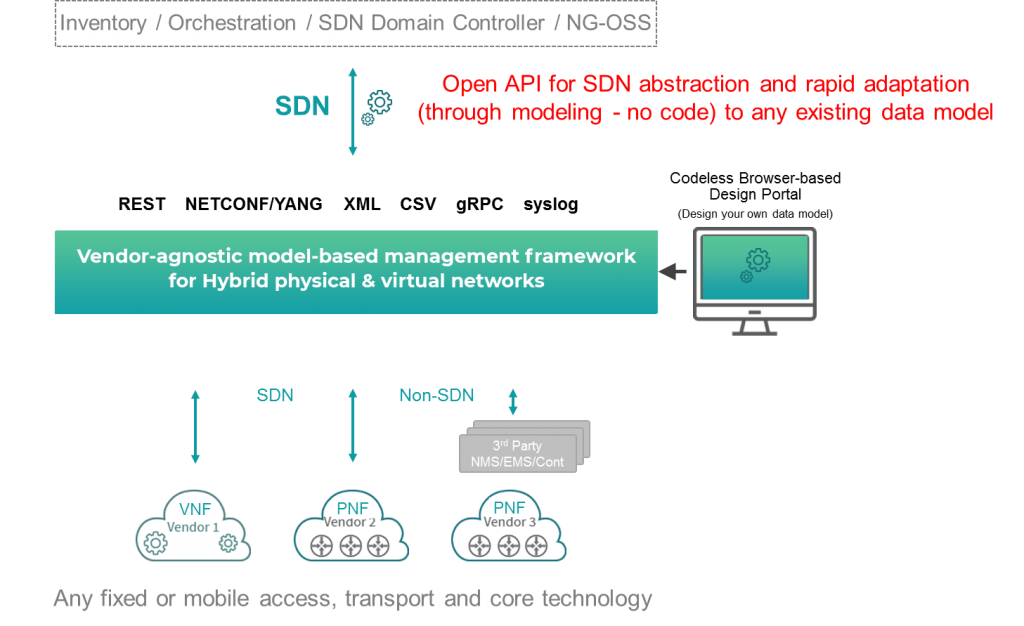

Traditionally, when operators deploy new technologies to support new services they put in a separate network in place. Which automatically lead to additional device and service delivery management systems. Over time, the collection of management systems leads to an operational nightmare. The operations manager with elbow on the desk, hand on their head staring in to a screen, thinking how do get out of this mess.
Over the past few years, service operators have embarked on transforming the transport connectivity network to support dynamic packet enabled services on virtualization. Like any new network technology, a new method of control and orchestration emerges. The main benefits of the new abstracted network are common models supporting a dynamic programmable infrastructure, model driven service definitions, and vendor agnostic network support. This enables support of orchestration frameworks, operational efficiencies and speed up service delivery.
This sounds fantastic if you are starting with a greenfield network approach but the challenge from an operations standpoint is that there is the traditional dedicated network and the new network and then you have multiple management systems. The old method of device configuration management, operational state, inventory, service provisioning, events and notifications is not compatible with the new which leads to having to manage multiple network simultaneously increases costs, and complexity. The argument is that over a short time the new network will replace the old. Realistically, traditional networks represent a sunk asset investment that is supporting revenue generating services and could very well stay in place for decades.
Ideally the most practical solution is to find a way to bring the traditional network under a single management umbrella and automate it. Until recently, the thought of supporting legacy devices in a new control paradigm was much easier said than done. Today, thanks to Fujitsu and Atrinet solution, the key goal of making operator’s existing, closed network infrastructure multi-vendor, agile and automated, is achievable. Specifically, for this purpose Atrinet and Fujitsu introduce a multi-vendor SDN enablement solution. It enables a seamless network resource abstraction, programmability and automation across any legacy and non-standard physical and virtual network functions by translating it to NETCONF/YANG or REST API. The solution is rapidly (in a matter of days) customizable using the DevOps-enabled browser-based self-service design portal for customers and partners. It’s a real game-changer for an operator’s Operations and Engineering teams.

Fujitsu and Atrinet are working together with operators globally to manage the transition from closed proprietary to open programable networking. We simplify operations by replacing the traditional, slow, high-touch management model with a real-time, automated SDN-based approach. This enables seamless provisioning of fast, on-demand services over hybrid network infrastructures – making sure traditional networks are ready to deliver new digital services.
For more information about the solution, please contact:
Andres Viera (Product Manager, Fujitsu Network Communications) – andres.viera@us.fujitsu.com
Yuri Denisov (VP, Product Management, Atrinet) – yuri.denisov@atrinet.com